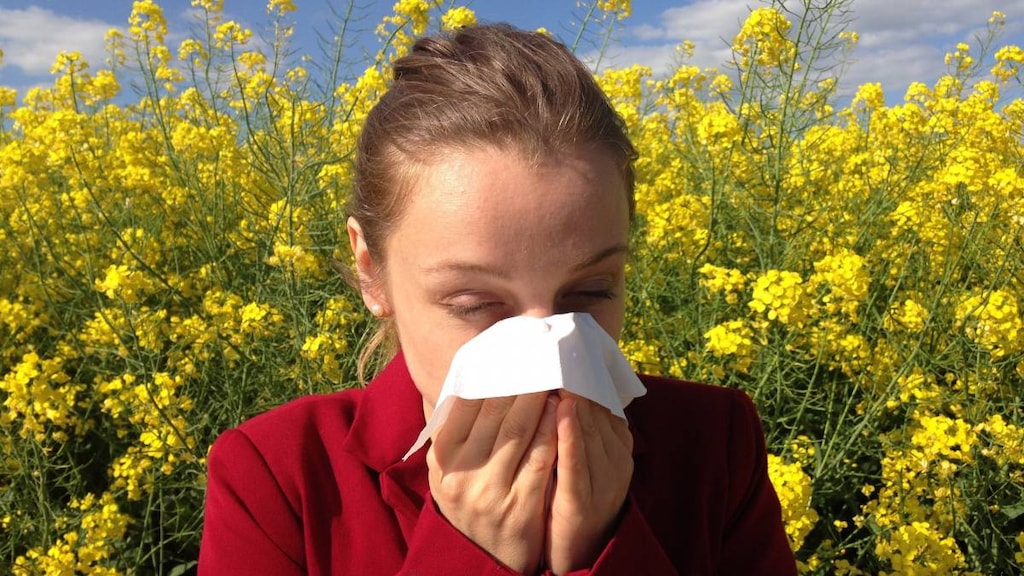Understanding Common Food Allergies

If you’re one of the more than 4 percent of Americans with a food allergy, then you know just how frustrating it can be. Every meal, every snack and every event that involves food becomes a careful planning session where you try to make sure your foods don’t have the wrong ingredients. And if your food allergy has severe symptoms, the stakes can be deadly.
What are food allergies?
An allergy is when your body’s immune system triggers a protective response to a foreign invader that it perceives as dangerous, known as an allergen, explains the Mayo Clinic. A food allergy is when the allergy trigger is a specific food or food ingredient.
What’s particularly concerning about food allergies is that, in many instances, the symptoms can be more severe than other forms of allergies, like a pollen allergy in the spring or fall.
Typical symptoms of food allergies
Food allergy symptoms can range from severe to life-threatening. They also can vary, depending on the allergy that’s present (more on that below). Generally, though, food allergy symptoms may involve the following, according to the Mayo Clinic:
- Skin: Itching, hives or skin rashes related to eczema are all potential food allergy signs.
- Mouth: It’s also possible that the reaction can occur where the food makes contact with the body. Tingling, itching or swelling in the mouth are all food allergy symptoms. Swelling can also occur on the tongue, lips, throat or face.
- Breathing: Food allergies can cause asthma-like symptoms, including congestion, wheezing or other breathing difficulties.
- Digestive: Nausea, vomiting, diarrhea or severe abdominal pain can follow exposure to a food allergen.
- Severe and life-threatening symptoms: In some cases, lightheadedness, dizziness and fainting can occur with food allergies. But the most severe symptoms are related to anaphylaxis. This is a reaction in which the airways and throat tighten, blood pressure drops severely, the heart beats rapidly and loss of consciousness can occur. Anaphylaxis requires emergency medical treatment to prevent severe outcomes, including death.
Common food allergy triggers
According to Food Allergy Research and Education (FARE), there are eight food allergens that are the most common:
- Milk
- Eggs
- Peanuts
- Tree nuts
- Soy
- Wheat
- Fish
- Shellfish
You’ll find a comprehensive breakdown of the stats, symptoms, severity and testing protocols for each allergy below.
Milk
- Stats: According to the Asthma and Allergy Foundation of America (AAFA), more children are allergic to milk than any other food. Between 1 and 2 percent of all U.S. children have a milk allergy.
- Symptoms: Milk allergy symptoms can include hives, vomiting, difficulty breathing and the life-threatening symptoms of anaphylaxis. It should be noted that milk allergy differs from lactose intolerance, which causes abdominal pain and cramping.
- Severity: In many cases, milk allergy can cause anaphylaxis and be severe or life-threatening.
- Testing: Elimination diets, skin tests and blood tests can be used to confirm a milk allergy.
Eggs
- Stats: In young children, the only allergy more common than eggs is milk, according to the AAFA. About 1.3 percent of American children are allergic to eggs.
- Symptoms: Nasal congestion, hives or other skin problems, cramps, nausea and vomiting, asthma and anaphylaxis are all potential symptoms of egg allergy, the Mayo Clinic says.
- Severity: In many cases, egg allergy can cause anaphylaxis and be severe or life-threatening.
- Testing: Food challenge tests (eating a small amount of the suspect food), elimination diets, skin testing and blood testing can all be used to diagnose egg allergy.
Peanuts
- Stats: Less than 1 percent (0.6 percent) of American children have a peanut allergy, the AAFA says. About 20 percent of them will outgrow it by adulthood.
- Symptoms: Skin reactions, mouth itching or tingling, runny nose, digestive problems, breathing problems and anaphylaxis are all potential symptoms of peanut allergy.
- Severity: Peanut allergy is one of the most severe food allergies. It causes more cases of anaphylaxis than any other food allergy, according to the Mayo Clinic.
- Testing: Elimination diets, skin tests and blood tests can be used to confirm a peanut allergy.
Tree Nuts
- Stats: Tree nut allergy is almost as common as peanut allergy, coming in at 0.4 to 0.5 percent of all American children, the AAFA says. About 9 percent of children with the allergy outgrow it by adulthood. Tree nuts include cashews, walnuts, almonds, pecans, pistachios, macadamia nuts and more.
- Symptoms: Diarrhea, abdominal pain, nausea and vomiting, trouble swallowing, congestion, trouble breathing and anaphylaxis can all accompany tree nut allergy.
- Severity: Along with peanuts, tree nuts are a leading cause of anaphylaxis and are considered quite severe, according to the American College of Allergy, Asthma & Immunology (ACAAI).
- Testing: Food challenge testing, skin tests or blood tests are all common methods of diagnosing tree nut allergy.
Soy
- Stats: Soy allergies occur in American children at a similar rate to tree nut allergies (about 0.4 percent), AAFA says. Most children with this allergy, however, no longer are allergic to soy by age 10.
- Symptoms: Hives, skin rash, mouth tingling or swelling, breathing problems, digestive issues and skin redness can all occur with soy allergy.
- Severity: Anaphylaxis can occur but is not as common, the Mayo Clinic says.
- Testing: Skin and blood tests are frequently used to diagnose soy allergy.
Wheat
- Stats: It’s not entirely clear how many people have a wheat allergy, but about two-thirds of the children who have an allergy to wheat will outgrow it by age 12, according to FARE.
- Symptoms: Nausea, vomiting, congestion, sneezing, hives, skin rash, stomach cramps, indigestion and asthma are potential wheat allergy symptoms.
- Severity: Anaphylaxis is possible, but is less common, the ACAAI says.
- Testing: Food challenges, skin tests and blood tests can be used to confirm a wheat allergy diagnosis.
Fish
- Stats: Unlike some other food allergies, fish allergy is fairly common among adults. FARE notes that 40 percent of people who have it don’t experience an allergic reaction to fish until adulthood.
- Symptoms: Congestion, nausea and vomiting, stomach cramps, hives, skin rash, headaches and asthma are all common fish allergy symptoms.
- Severity: Anaphylaxis is possible but it's a fairly rare reaction to fish, the ACAAI says.
- Testing: Food challenges, skin tests and blood tests can be used to confirm a fish allergy.
Shellfish
- Stats: Almost 7 million Americans experience food allergy symptoms after eating lobster, crab or other shellfish, the ACAAI says. Shellfish allergies typically develop in adulthood.
- Symptoms: Digestive symptoms, breathing problems, coughing, throat tightness, weak pulse, pale skin, hives, tongue swelling, dizziness and confusion can all occur with a shellfish allergy.
- Severity: Shellfish allergy can be severe, including causing anaphylaxis.
- Testing. Food challenges, skin tests and blood tests can be used to confirm a shellfish allergy.
Other foods that cause allergies
Of course, the “big eight” aren’t the only potential food allergy triggers, FARE notes. People sometimes develop life-threatening allergies to the following foods, although in smaller numbers than for the foods listed above:
- Corn
- Seeds like sesame and sunflower
- Meats
- Gelatin
- Spices like coriander and mustard
- Fruits and vegetables
When to see your doctor for food allergies
If you suspect that a food allergy may be causing your symptoms, see a doctor as soon as possible. The doctor can run a variety of tests to determine the specific cause of your symptoms and recommend ways to avoid the offending food. These diagnostic tests may include an elimination diet, where you stop eating certain foods and make a note of how your symptoms change, as well as a food challenge test, where you eat a very small and increasing amount of the offending food to see how it affects you. Blood tests or skin prick tests are also used to see how your body reacts to the offending food.
Article references
- Food Allergy, ACAAI, 2014, https://acaai.org/allergies/types/food-allergy
- Food Allergy, Mayo Clinic, 2019, https://www.mayoclinic.org/diseases-conditions/food-allergy/diagnosis-treatment/drc-20355101
- What Is a Food Allergy?, FARE, 2019, https://www.foodallergy.org/resources/what-food-allergy
- Milk Allergy, AAFA, 2019, https://www.kidswithfoodallergies.org/page/milk-allergy.aspx
- Milk Allergy, Mayo Clinic, 2019, https://www.mayoclinic.org/diseases-conditions/milk-allergy/diagnosis-treatment/drc-20375106
- Egg Allergy, AAFA, 2019, https://www.kidswithfoodallergies.org/page/egg-allergy.aspx
- Egg Allergy, Mayo Clinic, 2019, https://www.mayoclinic.org/diseases-conditions/egg-allergy/diagnosis-treatment/drc-20372119
- Peanut Allergy, AAFA, 2019, https://www.kidswithfoodallergies.org/page/peanut-allergy.aspx
- Peanut Allergy, Mayo Clinic, 2019, https://www.mayoclinic.org/diseases-conditions/peanut-allergy/diagnosis-treatment/drc-20376181
- Tree Nut Allergy, AAFA, 2019, https://www.kidswithfoodallergies.org/page/tree-nut-allergy.aspx
- Tree Nut Allergy, ACAAI, 2014, https://acaai.org/allergies/types/food-allergies/types-food-allergy/tree-nut-allergy
- Soy Allergy, AAFA, 2019, https://www.kidswithfoodallergies.org/page/soy-allergy.aspx
- Soy Allergy, Mayo Clinic, 2019, https://www.mayoclinic.org/diseases-conditions/soy-allergy/diagnosis-treatment/drc-20377807
- Wheat Allergy, FARE, 2019, https://www.foodallergy.org/common-allergens/wheat-allergy
- Wheat Allergy, ACAAI, 2014, https://acaai.org/allergies/types/food-allergies/types-food-allergy/wheat-gluten-allergy
- Fish Allergy, FARE, 2019, https://www.foodallergy.org/common-allergens/fish-allergy
- Fish Allergy, ACAAI, 2014, https://acaai.org/allergies/types/food-allergies/types-food-allergy/fish-allergy
- Shellfish Allergy, ACAAI, 2014, https://acaai.org/allergies/types/food-allergies/types-food-allergy/shellfish-allergy
- Other Food Allergens, FARE, 2019, https://www.foodallergy.org/other-food-allergens





